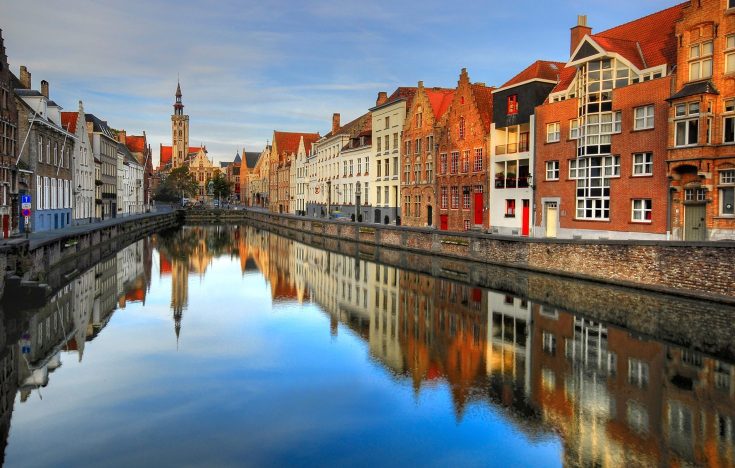In 2020, the European Commission launched its climate change strategy, the European Green Deal. It sets out the EU’s transition pathway, with a legally binding commitment to reduce net greenhouse gas emissions by at least 55% by 2030, compared to 1990 levels. In addition, it describes the blueprint for transformative changes in a fair, cost-effective and competitive way, benefitting nations throughout Europe by creating policies that spur economic growth.
To support these efforts, as well as reduce reliance on imported fossil fuels, the EU published its REPowerEU plan in 2022, making green hydrogen a top priority. It aims to reach 20 million tons of renewable hydrogen by 2030; half imported, and half produced domestically.
With its current infrastructure and supportive policy environment, Belgium is seen by many as having the potential to be a hub for green hydrogen in Western Europe. What are the current challenges and opportunities? What is the role of regulation and finance? Experts at the recent BNP Paribas Sustainable Future Forum (SFF) in Belgium shared their insights.
A hub for renewable energy vectors
In 2021, and in line with EU aims on renewable energy, Belgium published its federal vision and strategy on hydrogen. With a recognition that importing renewable energy vectors – including hydrogen H2 – will be more cost efficient than local production, the plan aims to position Belgium as an import hub, building a supply chain for the future as well as establishing a robust market within the country for the safe and optimal transport of sustainable molecules.

We need to look to alternatives, and hydrogen has a lot of potential, together with its derivatives like ammonia and e-methanol. However, it will come with challenges.
Christa Sys, Professor at University of Antwerp & holder BNP Paribas Fortis Chair Transport, Logistics and Ports
Opening the SFF event, Christa Sys, Professor at University of Antwerp & holder BNP Paribas Fortis Chair Transport, Logistics and Ports, explained its potential: “If we take a sector like maritime transport, we will see the amount of trade increasing by two tonnes per capita by 2050 – hence increased waterborne transport will be needed. We need to look to alternatives, and hydrogen has a lot of potential, together with its derivatives like ammonia and e-methanol. However, it will come with challenges.”
For multinational ENGIE, Belgium has the potential to support the company’s ambition to become a world leader in the production of renewable hydrogen and related sustainable fuels.
“We see Belgium as a sweet spot for the large-scale initial production of hydrogen”, explained Eric Gosseye, Energy Solutions Architect and Partnership Manager, ENGIE, speaking at SFF. “Here we have everything: a strong infrastructure base through pipelines, a skilled workforce, and local renewables with offshore wind power. We believe that with the right investments and a stable, long-term environment, Belgium will remain a hub for renewable molecules, in terms of production and import.”

We believe that with the right investments and a stable, long-term environment, Belgium will remain a hub for renewable molecules, in terms of production and import.
Eric Gosseye, Energy Solutions Architect and Partnership Manager, ENGIE
Meanwhile, Belgian DEME Group is developing and investing in green hydrogen projects overseas, with a view to support import into Europe. Under its HYPORT concept, the company is developing a green hydrogen and ammonia production plant in Duqm, Oman, which is using an abundant local supply of renewable energy to produce and then import green hydrogen products to customers in Europe via the strategically located Port of Duqm.

In the Middle East, we are investing in a full value chain green hydrogen project. That means that we develop and oversee the project from the very first turbine in the desert, to the storage of green molecules in the port, the sale, and everything in between.
Herbert Jost, General Manager Hydrogen, DEME
Herbert Jost, General Manager Hydrogen, DEME explained: “In the Middle East, we are investing in a full value chain green hydrogen project. That means that we develop and oversee the project from the very first turbine in the desert, to the storage of green molecules in the port, the sale, and everything in between.”
What is green hydrogen?
Green hydrogen is produced through electrolysis, by splitting water (H2O) into hydrogen (H2) and oxygen (O2) using renewable electricity sources such as wind, solar and hydroelectric.
In contrast to grey hydrogen, which is extracted from fossil fuels, green hydrogen is considered a clean energy vector, alongside other low-carbon hydrogen forms. While grey hydrogen still represents around 95% of production today, green hydrogen is expected to take on a prominent role in the renewable energy mix.
While challenges remain around storage and cost-efficiency, green hydrogen has the potential to replace traditional fuels across transport sectors, including aviation and shipping. It can be converted to produce alternative fuels such as ammonia and e-methane and has the potential to transition carbon-intensive industrial processes across industries such as petrochemicals, steelmaking, and power generation.
From challenges to opportunities
Challenges remain to scale up hydrogen’s potential, not least the extensive infrastructure required.
“We need a lot of infrastructure; hydrogen molecules are extremely small and hard to transport and store,” explained Gosseye. “That means we need massive investments in the pipeline, and in the harbours to import hydrogen molecules, often in compound forms such as ammonia, methane, and increasingly, liquid hydrogen.
“Europe will need tens of billions to invest in such infrastructure. It sounds like a lot. But when compared to the hundreds of billions spent yearly on the import of oil and natural gas, it seems totally possible.”
DEME’s Jost raised another consideration with the growing market for hydrogen-based fuels, such as e-methane and green methanol: “Unlike ammonia, to produce these fuels you need ca. 10 kilograms of CO2 for every kilogram of hydrogen. The huge investments in these kind of projects will therefore need a reliable CO2 source for many years to come. Then we are looking at the need for a circular CO2 economy involving capture, transport and reuse.”
Towards a liquid and competitive market
The EU is aiming to spur further investments by offering grants to innovative projects through its ETS Innovation Fund – one of the world’s largest funds for low-carbon technologies– that will provide around €38 billion of support between 2020 and 2030, depending on the carbon price. Furthermore, in September 2022, the EU approved €5.2 billion of public funding to support hydrogen infrastructure and applications, which includes projects in Belgium.
Carla Benauges, Hydrogen and Innovation Policy Officer for the EU Commission, commented: “We see public money as a seed to take the risk off of the biggest projects. We will need more traditional financial stakeholders to take over the rest. With the Innovation Fund, we typically finance 60% of the cost gap; therefore we need the rest to come from somewhere else.”

We see public money as a seed to take the risk off of the biggest projects. We will need more traditional financial stakeholders to take over the rest.
Carla Benauges, Hydrogen and Innovation Policy Officer, EU Commission
Regulation is also key to scale up production, promote cost-efficiency and boost consumer demand.
“We can draw a parallel with renewable energy 15 years ago”, commented Hendrik Deboutte, Energy, Resources & Infrastructure, BNP Paribas Fortis. “For example, when we first started financing offshore wind parks in Belgium, legislation was untested and evolving quickly. Over time, regulation has stabilised and the EU approach to state subsidies has been made more predictable, supporting a liquid and competitive market. Once regulation around hydrogen is clear and simple to use, financing liquidity will be plenty available.”

Over time, regulation has stabilised and the EU approach to state subsidies has been made more predictable, supporting a liquid and competitive market.
Hendrik Deboutte, Energy, Resources & Infrastructure, BNP Paribas Fortis
Jost also pointed to the role of regulation as a catalyst for demand: “In a nascent industry, negotiating long-term offtake agreements for hydrogen products is enormously complex.”
Finally, price dynamics matter. “We need mechanisms in place to ensure customers can buy green molecules at prices that don’t exceed the grey alternatives (including carbon cost) and to promote transparency and security of supply. Infrastructure is crucial, but what we need more right now is stipulation of customer demand,” explained Jost.
BNP Paribas aims to support its clients in their energy transition, and to use sustainable finance to scale up the development of hydrogen. This includes utilising capital markets, project finance, and creating dedicated funds, including through BNP Paribas Asset Management.
In 2021, BNP Paribas created the Low-Carbon Transition Group. This network of experts is responsible for coordinating bank wide initiatives on transition topics, sharing skills between countries and business lines and scaling up client engagement in carbon-intensive sectors.
Explore more SFF 2022 insights
